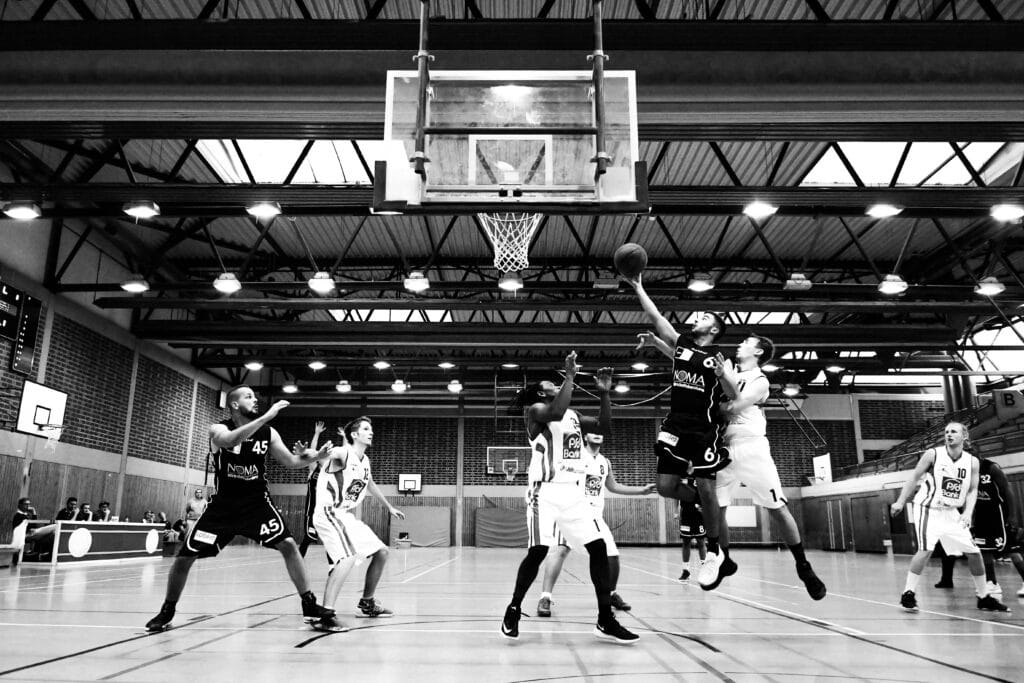
Coaching Techniques for High-Pressure Situations: Finding Success Under Pressure
Coaching basketball in high-pressure situations requires a unique set of skills and strategies to ensure players perform effectively under stress. High-pressure moments, such as the final minutes of a close game, require coaches to guide their teams with confidence and composure.
This article explores key techniques for coaching in high-pressure situations to help your team succeed when it matters most.

1. Understanding High-Pressure Situations
High-pressure situations in basketball are characterized by several factors that can significantly influence player performance and decision-making.
Close Game Scores
When the game is tied or within a few points, every decision and play becomes crucial. Players must be prepared to handle the pressure of potentially game-altering moments. Coaches should foster an understanding that every possession counts.
Critical Moments
These are situations that can define the outcome of the game, such as game-winning shots, crucial defensive stops, and important free throws. Training players to remain calm and execute their skills under these circumstances is vital.
Emotional Intensity
Players may experience increased anxiety and stress, impacting their performance and decision-making. Coaches need to help players manage their emotions, so they can focus on execution rather than worrying about the outcome.

2. Maintaining Composure
As a coach, maintaining your composure is essential in high-pressure situations. Your demeanor can significantly impact how players respond.
Lead by Example
Demonstrating calmness and confidence sets a positive tone for the team. Players look to their coaches for guidance, especially in tense situations.
Avoid Panic
Stay focused and avoid making impulsive decisions. Stick to your game plan and make adjustments as needed, rather than reacting emotionally to the situation.
Support Your Players
Provide encouragement and reassurance to players. This can help them stay focused and composed, reinforcing their confidence in their abilities.
3. Preparing for Clutch Situations
Preparation is key to handling high-pressure moments effectively.
Practice Clutch Scenarios
Incorporate drills that simulate high-pressure situations, such as game-winning shots or last-minute defensive stands. This helps players practice executing under stress.
Develop Game Plans
Create specific game plans for close games. Include strategies for end-of-game situations, time management, and inbounds plays. Familiarity with these plans can make players more confident when executing them.
Review Situational Plays
Use game film to review and analyze past high-pressure situations. Identify successful strategies and areas for improvement, giving players insights into how to approach similar scenarios in the future.

4. Effective Communication
Clear and effective communication is crucial in high-pressure situations. Misunderstandings can lead to mistakes that may cost the game.
Use Clear Instructions
Provide concise and clear instructions to players during critical moments. Ensure they understand their roles and responsibilities, especially when executing set plays.
Encourage Team Talk
Promote communication among players to keep them focused and organized on the court. A well-coordinated team can better execute strategies under pressure.
Manage Timeouts Wisely
Use timeouts strategically to provide guidance, calm the team, and make necessary adjustments. This can be a crucial time to refocus players and clarify the game plan.
5. Implementing Pressure Defense Strategies
Pressure defense can be a game-changer in high-pressure situations. It can create turnovers and change the momentum of the game.
Full-Court Press
Implement a full-court press to disrupt the opponent’s offensive flow and create turnovers. This tactic can force opponents into making rushed decisions.
Half-Court Trap
Use a half-court trap to force opponents into making mistakes. This defensive intensity can lead to easy scoring opportunities and energize your team.
Pressure Situations
Practice defensive schemes specifically designed for late-game scenarios to enhance effectiveness. Rehearsing these strategies can improve execution when it counts most.

6. Utilizing Time Management
Effective time management is essential in high-pressure situations, particularly in the closing minutes of a game.
Control the Tempo
Manage the tempo of the game to either speed up or slow down play as needed. Knowing when to push the pace or slow things down can influence the game’s outcome.
Manage the Clock
Be strategic with clock management. This includes making decisions on when to foul, using timeouts, or running down the clock. Understanding the game’s timing can give your team a significant advantage.
Execute End-of-Game Plays
Develop and practice end-of-game plays that maximize your team’s chances of success. Players should know what to do in critical situations, whether it’s executing a last-second shot or securing a rebound.
7. Training Mental Toughness
Developing mental toughness helps players handle pressure more effectively. Coaches should incorporate techniques to build this resilience.
Mental Conditioning
Incorporate mental conditioning exercises into practice to help players build resilience and confidence. These exercises can include visualization, meditation, and breathing techniques.
Visualization Techniques
Use visualization techniques to help players mentally prepare for high-pressure situations. Encourage them to envision themselves succeeding in clutch moments.
Focus on Process
Emphasize focusing on the process rather than the outcome. Teaching players to concentrate on executing their skills can reduce anxiety and improve performance in high-pressure situations.

8. Analyzing and Adjusting Strategies
Post-game analysis and adjustments are crucial for continuous improvement. Learning from each game can help teams perform better in future high-pressure situations.
Review Performance
Analyze how players and the team handled high-pressure situations. Identify successful strategies and areas that need improvement. Use game film to highlight these moments.
Adjust Training
Make adjustments to your training program based on analysis to better prepare for future high-pressure scenarios. If certain tactics were effective or ineffective, incorporate those lessons into practice.
Learn from Experience
Use experiences from high-pressure games to refine strategies and improve decision-making. Discuss what worked, what didn’t, and how to adjust moving forward.
Coaching Techniques for High-Pressure Situations Conclusion:
Coaching in high-pressure situations requires composure, preparation, effective communication, strategic defense, time management, mental toughness, and ongoing analysis.
By implementing these techniques, coaches can guide their teams to success in the most critical moments of the game. Utilize these strategies to enhance your coaching approach and help your players excel under pressure.



